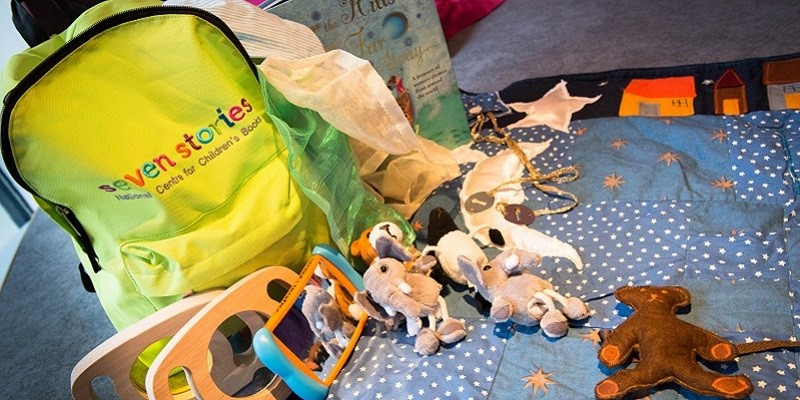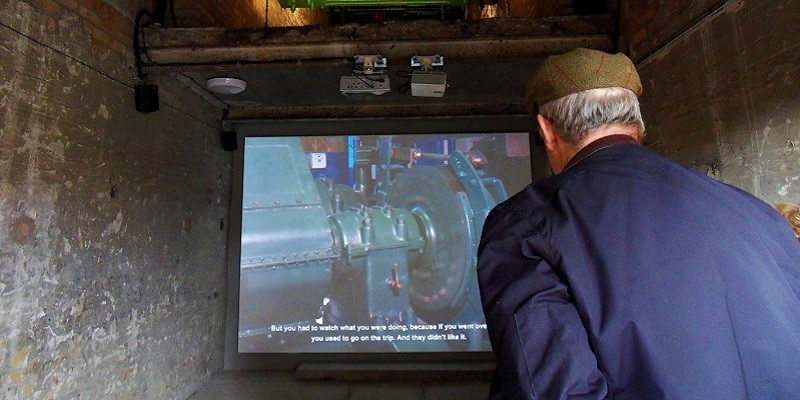Top tips for accessible storytelling


COVID-19 update: Not all of these tips might be relevant at the moment while individuals isolate and practice social distancing. Something you can do is to make sure your disabled access information is listed online, on your own website and on Euan's Guide. It is also important to regularly check this information to make sure it is kept up to date. This is a great step in assisting anyone considering visiting your venue when it is safe to do so.
Storytelling doesn’t just take place in a book; all visitor attractions tell stories of some kind, and there are many imaginative ways to make your stories accessible. Theatre groups, libraries, and cinemas also have the opportunity to share stories in a thoughtful and accessible way. So, how can you engage with a wider audience as you tell your story?
Sometimes spoilers are a good thing
For some people, a good story can be ruined by an unexpected turn. While surprises and frights may be exciting to some audience members, they can be unsettling to others. It’s helpful to recognise that many people prefer to know what to expect in advance, and having visual stories or pre-show guides is a good way to meet the individual requirements of audiences enjoying your story!
Case Study: Frozen Light Theatre design multi-sensory performances for audiences with Profound and Multiple Learning Disabilities (PMLD). They create safe spaces for their audiences by taking away the conventions of traditional theatre, and by providing visual stories and pre-show guides for the audience member and their companion before the show. Find out more >>
Engage all the senses

Image of: Toys and a bright backpack from Seven Stories.
Bubbles, sand, water, buttons, felt, noises; or, if you’re the Roald Dahl Museum, how about a chocolate scented door? By engaging all of the senses, you are inviting everybody to enjoy your story in their own way. No two people will experience the same thing, but everybody will have been immersed in the characters, environment and setting you have built. More than anything, it’s good fun!
Case Study: Seven Stories engage the senses beautifully! They are the National Centre for Children’s Books and have successfully designed ways to engage all the senses in a fun and imaginative way. One of their creations includes a Sensory Backpack filled with props and surprises to entertain kids.
Consider alternative formats
No matter how you tell your story, it’s a good idea to make sure you have alternative formats of the information you are trying to communicate. For narratives that have to be read, include copies that are easy read, large print or audio. This means that everybody will be able to enjoy the words and take part in the adventure!
Say it in more ways than one

Image of: Someone watching a video with captions.
Video is big news, and that’s not just online. Visitors to museums and galleries enjoy watching videos as they wander around, so how do you make sure this format of storytelling is accessible? Don’t forget to include subtitles on video footage, and a BSL interpreter if you can. Clear audio with adjustable volume is also ideal, and having the option of headsets can make the story more enjoyable for many guests. Without headsets, other visitors talking over the script may confuse some people and dampen the storytelling experience.
Case Study: Woodhorn Museum in Northumberland tells the story of a winding engine at an old colliery. They have projections showing animations of the cages moving up and down the shaft, and an interview with two former windermen. Each video is subtitled on a large screen in a stone room. Find out more >>
Don’t leave out the good bits
Description is a big part of storytelling, but sometimes storytellers leave out a large part of the story without even realising it. Guided tours around grand museums are fascinating, especially if you can take in the style and history of the building you’re in. If you are leading a tour with visually impaired people, don’t forget to describe the setting you are sitting in or walking through. While it is interesting to hear and feel objects in a museum, it’s also wonderful to learn about the environment you are in. Be as descriptive as possible, not forgetting the stained-glass windows or ornate ceilings!
Stories on the move

Image of: People gathered around outside listening to someone talking.
Not all stories take place in one room! May attractions tell stories on the move, whether it’s a walking tour, a ghost trail, or a rooftop bus around the city. If you’re telling a story on the move, think about the surroundings and how easily people can follow the route you have paved out. If your tour is on foot, consider creating bespoke tours for mobility impaired people or wheelchair users. It’s much better to craft a complete route with a captivating story than to cut out chunks of your story where there are steps or a steep hill. If you use a vehicle to take people on a journey, think about how accessible your mode of transport is, including whether there are screens with subtitles, good viewpoints or ramp access.
Case Study: Edinburgh Bus Tours unveiled a new accessible fleet in 2016. The buses have more window space and a captioned screen in front of the seating area for wheelchair users joining the tour. Find out more >>










 Follow Euan's Guide on Instagram
Follow Euan's Guide on Instagram
 Follow Euan's Guide on LinkedIn
Follow Euan's Guide on LinkedIn
 Follow Euan's Guide on Facebook
Follow Euan's Guide on Facebook

